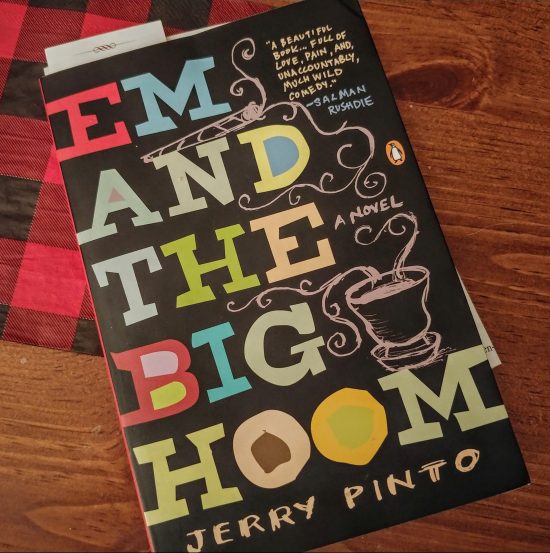But why have we turned to the right? That’s where the psychiatric ward is. Of course, there must be examples in history of those who, in an effort to protect their non-mainstream alternative thinking, pretended to be who they were not in order to shield themselves from politics. This may be a similar arrangement. Even as I’m wondering about this, a wheelchair emerges from somewhere and I am told to sit in it. I refuse, saying I’d rather walk. They say if I don’t sit in it on my own, they will make me. So I sit.
Books and movies about mental illness and psychiatric wards frequently play to either the horror or mystique of madness, while language related to psychiatric conditions—bipolar, psychotic, schizophrenic—is often applied carelessly to describe a range of circumstances that have nothing to do with actual diagnoses. Around the world, the stigma of mental illness is difficult to shake. A heart attack will bring friends and family to your hospital bedside; a serious breakdown can leave you isolated and alone, at home or if you are sick enough, confined to a psychiatric unit. From the outside, a worse fate cannot be imagined but, in reality, once the shock of finding oneself hospitalized subsides, the world behind the locked doors tends to contain a community, at once strange and familiar, within which one can recover. Days pass with a certain routine that gradually returns structure to a life that has been temporarily, or periodically, upended, distorted, weighed down or wired up. Hospital, by Bangladeshi-Australian author Sanya Rushdi, takes you into that environment as seen through the eyes of a patient experiencing psychosis.
 Based on real-life events, this debut novel is set in Melbourne, originally written in Bangla and translated by Arunava Sinha. Rushdi’s protagonist, is, like the author, a Muslim woman named Sanya. Years earlier, psychosis interrupted her PhD studies in Psychology. Now, with her third episode pointing to a diagnosis of schizophrenia, she finds herself at odds with her family, a community mental health team, and everyone who seems to be conspiring to force her to comply with the medical model of treatment that she distrusts. She acknowledges her past psychosis, but is unable understand that the curious coincidences, obsessive behaviour, and lurking paranoia might signal that she is sick again. That is the cruel nature of serious mental illness—what one experiences from the inside is increasingly at odds with what others observe from the outside. As her psychosis progresses, the world is simultaneously terrifying and brilliant, but Sanya resists all efforts to encourage her to access care willingly, so ultimately she arrives at the hospital under police escort.
Based on real-life events, this debut novel is set in Melbourne, originally written in Bangla and translated by Arunava Sinha. Rushdi’s protagonist, is, like the author, a Muslim woman named Sanya. Years earlier, psychosis interrupted her PhD studies in Psychology. Now, with her third episode pointing to a diagnosis of schizophrenia, she finds herself at odds with her family, a community mental health team, and everyone who seems to be conspiring to force her to comply with the medical model of treatment that she distrusts. She acknowledges her past psychosis, but is unable understand that the curious coincidences, obsessive behaviour, and lurking paranoia might signal that she is sick again. That is the cruel nature of serious mental illness—what one experiences from the inside is increasingly at odds with what others observe from the outside. As her psychosis progresses, the world is simultaneously terrifying and brilliant, but Sanya resists all efforts to encourage her to access care willingly, so ultimately she arrives at the hospital under police escort.
Sanya’s narrative is restrained and oddly lacking in affect, even when she describes her tears and outbursts. She is continually trying to observe herself and logically reason her way through whatever arises. However, her reasoning is often disjointed and confused. She is constantly seeking symbols of significance, spends a lot of time trying to figure out the secrets behind the thoughts and actions of others, questions why certain song lyrics keep coming to mind, and fitfully attempts to draw strength from her faith. Rushdi’s ability to present this state of fractured association and allow her protagonist’s processing to slowly become more coherent as the story progresses is very impressive. Madness has a logic of its own as anyone who has experienced depression, mania or psychosis knows well.
 Rushdi captures this shifting state of awareness by combining Sanya’s internal monologue, readings, and diary entries with the use of a dramatic format to capture external dialogue. This allows a record of what is said apart from what Sanya hears or wants to hear. It is also especially effective for reflecting the banter between the residents on the ward. On her first day in the hospital, one of the patients, an older man that Sanya describes as “so handsome,” exposes himself to her as she passes his room. Her self-appointed tour guides try to explain:
Rushdi captures this shifting state of awareness by combining Sanya’s internal monologue, readings, and diary entries with the use of a dramatic format to capture external dialogue. This allows a record of what is said apart from what Sanya hears or wants to hear. It is also especially effective for reflecting the banter between the residents on the ward. On her first day in the hospital, one of the patients, an older man that Sanya describes as “so handsome,” exposes himself to her as she passes his room. Her self-appointed tour guides try to explain:
Michael: Please don’t be upset. He does these crazy things, but he has a beautiful heart. Give him a day or two and you’ll see what a lovely person he is.
Me: I’ve seen it already.
Glen and Michael laugh.
Glen: Yes, many of the girls are crazy about him.
Me: They need a reason to be here, after all.
Glen and Michael laugh again.
Initially, most of the men Sanya meets seem exceptionally attractive to her—a charged energy between the sexes is not uncommon on the unit. She becomes obsessed with a few of the male patients during her early weeks in the hospital, while other women barely register unless she senses that there might be something between one of them and a man she fancies. At such moments, jealous and conspiratorial thoughts immediately engulf her. At one point, when a doctor suggests she seems to be spending too much time following the male patients around, she becomes defensive. She will leave that session with another drug, lithium, added to her regime as a mood stabilizer and eventually these persistent passions will start to subside.
With her education in psychology and her prior experience with psychosis, Sanya feels she is in a good position to determine whether or not she is sick this time. She blames her family for sending her to the hospital and is resistant to drugs. She argues that a particular type of language-focused talk therapy would be preferable, but, if she wants to be released, she knows that medication is part of the game. Convinced of the value of language, she pours her thoughts into her diary, filling pages with arguments that are, at the height of her psychosis, bound by incoherent and tenuous connections. Reasoning and recognition are slow to return.
I read this book very slowly, although it is neither long nor difficult. But as someone who has been hospitalized for manic psychosis, I was impressed and sometimes shaken by Rushdi’s ability to draw on her own experience to craft such an uncanny portrait of psychosis from the inside. Her protagonist appears very logical and rational, and within her own inner construct she is, but from the outside, it is clear to her family and the medical personnel that she is unaware or unwilling to believe that she is ill. She lacks insight. It is almost like being separated from the rest of the world by a one way mirror. On her side, are her fellow patients who form among themselves a community, an island. She remains convinced that language is the answer to her survival and recovery. And perhaps she has a point there, as Rushdi has demonstrated through her own use of language to create a work that is masterful, moving and tightly controlled.
Hospital by Sanya Rushdi is translated from the Bangla by Aruava Sinha and published by Seagull Books. In Australia, Hospital is published by Giramondo.



















